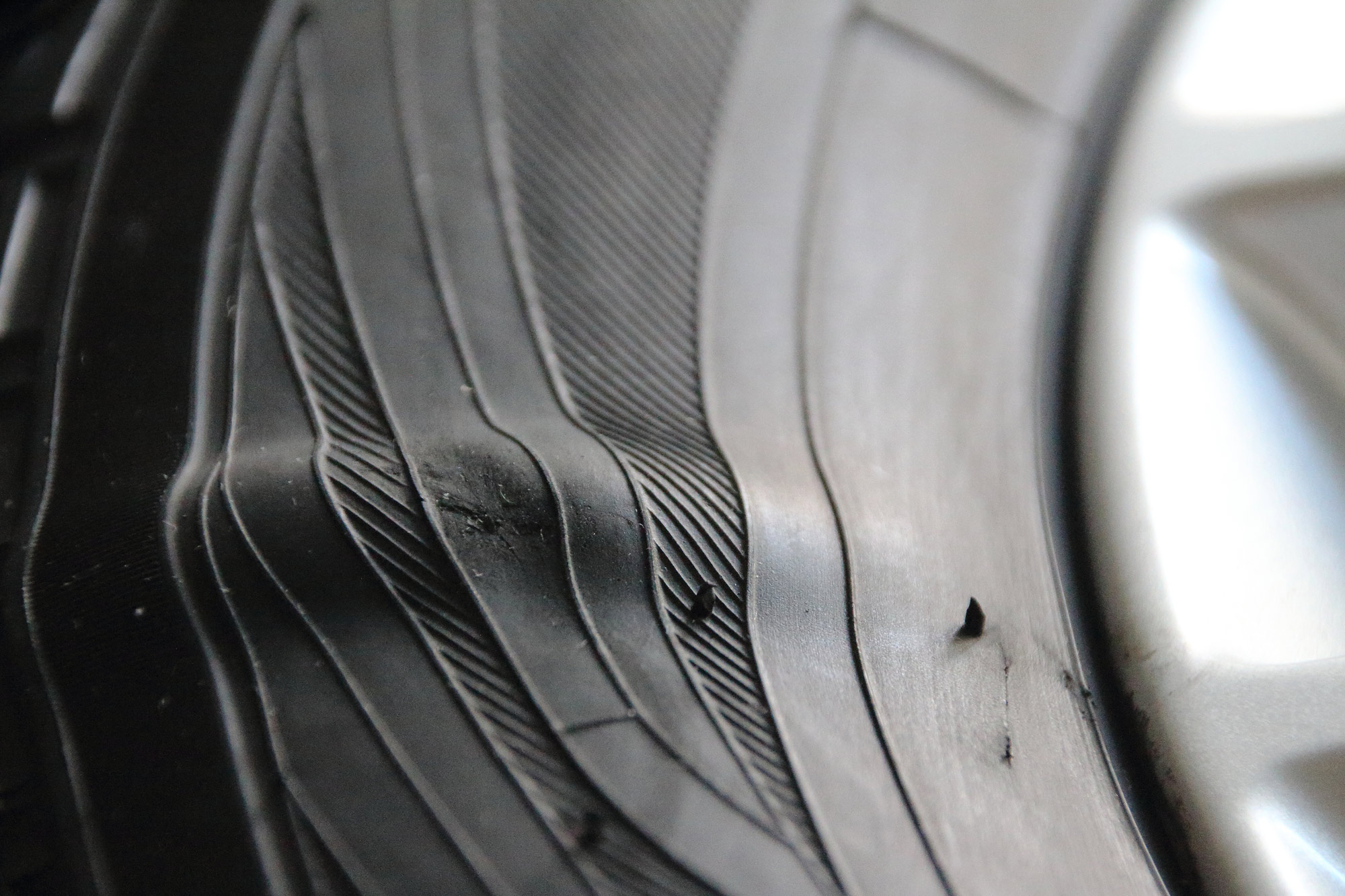Tire Bubble: What Is It and Is It Fixable?
Don't ignore this potentially dangerous issue with your vehicle's rubber.
 Shutterstock
Shutterstock
QuickTakes:
You may not give your tires a second thought, but they are the only part of your vehicle that touches the pavement. This is why inspecting your tires regularly for wear and tear is always a good idea. While many people just check for tread depth, they should also look for tire bubbles.
A Tire Bubble Should Be Easy to Spot
A tire bubble or bulge is a pocket of air inside the tire's body and should be taken seriously. Driving on a tire that's compromised with a bubble is dangerous.
Determining if your vehicle has a tire bubble is relatively straightforward. First, check the tire for obvious cuts or gouges. You could find a bubble or egg-shaped bulge forming in the tire's tread, and you'll often hear or feel it when driving. A bubble will most likely form in the sidewall of your tire, the part of your tire between the wheel and the tread.
Tire Bubbles Happen for a Variety of Reasons
A car tire is made of more than 100 layers called plies made of steel, textiles, and rubber. The components are bonded together inside the rubber compound of the tire. When the bond between the layers disintegrates or is cut, air can seep in, and a tire bubble can form.
Although a bubble can form because of a manufacturing defect, a tire bubble usually results from impact. If your vehicle hits a curb or median at high speed, be sure to inspect your tires for a bubble.
It's a good idea to check those sidewalls if you hit curbs while parking or regularly drive over rough roads. Poorly maintained tires driven at the wrong air pressure can also suffer a bulge easier than a tire in good shape and filled to the correct tire pressure.
A tire bubble can form if a car or truck is loaded beyond a tire's load rating. Regardless of the size, any tire bubble should be considered a serious problem.
It is not safe to drive your vehicle with a tire bubble. To do so means more air can leak into the bubble, and it will get larger. Eventually, the tire will blow out, which could cause you to lose control of your car.
Tires With Bubbles Are Unfixable
A tire with a bubble can't be fixed. The tire's internal structure is compromised, and the only solution is to replace it. If you have a full-size spare tire, be sure it is inflated to the correct pressure and swap it for the damaged tire.
Depending on the age of your other tires, you may need to replace at least one more, if not all, tires for optimal performance and safety.
If your car has a compact "donut" spare and you have a tire bubble in the front tire, you'll want to swap a full-size tire from the rear to the front and place the spare at the rear. Your front tires must support the engine's weight, in most cases, and withstand most braking forces, so a donut spare isn't the safest solution.
Many cars these days do not have a spare and come with a tire inflator kit. Your best bet is to call for a tow to the nearest tire shop.



